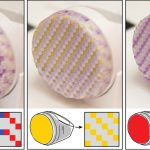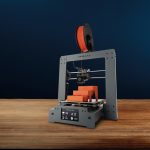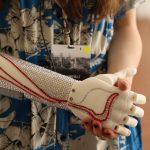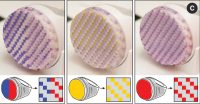What 3-d Printing can not Do
rapid prototyping has graduated to on-demand manufacturing. here’s what that means for the way forward for manufacturing.
October 6, 2015
Jack Strauser’s relationship with the chinese language manufacturing industry is amazingly anxious. Strauser, founder and CEO of Florida-primarily based company Dok answer, believes a chinese factory stole his digital charging station designs and then offered them to a U.S. distributor, who now sells them.
“I don’t have 1,000,000 dollars to simply throw around to shield my patent,” says Strauser. “I’ll spend each dime i’ve, however i have a number of patents. it may possibly financially spoil me.”
Strauser is presently preparing to take the U.S. distributor to trial for patent infringement, with the claim that its main factory in Shenzhen poached his designs. but he fears that his small company won’t be capable of combat again in opposition to his a lot higher opponent. It’s a David and Goliath story that, in many ways, reflects the greater mass manufacturing economic system.
stories about the faltering chinese language economy, the sector’s leader in mass manufacturing, deliver up questions over whether tectonic shifts are coming to turn out to be the manufacturing sector. And given the sharp increase in world hardware startups due to the fact 2012, it remains to be viewed if small businesses, like Strauser’s, have applied enough force yet on the manufacturing world to desire their interests. speedy prototyping instruments—particularly desktop 3D printers—have bolstered small businesses’ paths to market in latest years. while China’s manufacturing activity declines, is there a possibility for 3D printing to turn out to be manufacturing even further?
3-D’s Limits
“Digital printing is very good, for me, to position my invention in a CAD design and have it made so i will be able to get the samples. That’s the place it saves cash in the us,” says Strauser, who has over 25 years of expertise in manufacturing.
Strauser’s charging docks are excellent candidates for 3-d printing. diminished to their parts, his docks include just a few pieces of plastic and a few electronics. A 3D printer could handle everything apart from the meeting and the electronic components—the resistors, capacitors, and inductors—which might need to be ordered separately, from China or elsewhere.
yet Strauser’s manufacturing strains will remain firmly planted in chinese factories. A 3-d printer wouldn’t be able to deal with the volumes of plastic Strauser desires to meet his shoppers’ extent demands within an appropriate timeframe and with a good quality usual; his distributors ask for a 2,000-item minimal. Mass production, he says, is the one method that may accommodate that volume at a reasonable price level, so he’s staying in China for that, choosing to combat to keep his business afloat within the sea of factories and firms there.
For now, looks as if the percent of change within the consumer electronics business will probably be glacial erosion, slightly than seismic. “There’s no device that you just’re using today that can be 3-D printed to the standard you’re going to just accept as the shopper,” says Liam Casey, founder and CEO of PCH international, an organization that creates manufacturing and retail solutions for growing companies. one in all its major actions is linking its shoppers to producers in China. “not one of the corporations we work with would accept the quality of merchandise that comes off a 3-d printer.”
out of doors of the prototyping phase, best sure industries, like clinical and aerospace, have been in a position to derive price from 3D printed products; they thrive on custom-made, one-off elements. client electronics businesses, alternatively, are confronting three-D printing’s limits now that they’re transitioning from prototyping and beginning to use the know-how for on-demand production.
A Brooklyn startup referred to as BotFactory sells a device that permits inventors to provide printed circuit boards on demand. although it doesn’t solely use 3D printing, BotFactory’s on-demand production theory is similar: The inventor loads a design, and the machine in an instant begins making the product. First, a person hundreds her PCB design into an internet kind. Then, a machine prints the connections onto any flat surface with conductive ink. at last, a robotic arm mechanically locations the electronic elements into the proper spots on the board.
but BotFactory acknowledges that its gadget is only appropriate for prototypes and low volumes; printing the rest greater than 1,000 pieces in a reasonable period of time would require a number of of BotFactory’s $2,999 machines working under human supervision. for a lot of smaller firms, outsourcing to China for high-extent projects is worth the time and cost financial savings.
build native?
Proponents of the native manufacturing motion say that manufacturing developments are firmly pointed faraway from China’s mass production economic system. Startups need to produce their products with regards to their designers, minimize down on the amount of stock they store, and scale back supply times.
“It’s going to be on demand, it’s going to be native, distribution goes to be free, basically,” says Brian Garret, cofounder of 3D Hubs, a Dutch startup that connects individuals who need to 3-d print with local 3-D printers within its online community. In 2013, 3D Hubs’s network had just 9 printers. This 12 months, the network surpassed 22,000 printers, giving 1 billion individuals access to 3-D printers within 10 miles of their homes. it is the world’s greatest network of three-D printers.
Garret has his eyes set on upsetting global, industrial supply times, aiming to draw firms with Asian manufacturing operations, like Nike and Ikea, as purchasers. meanwhile, in February, Amazon filed a patent for delivery vehicles that will be outfitted with 3D printers, but every other move in the firm’s quest to comprehend on-demand supply perfection. nevertheless it’s no longer clear exactly when these projects will materialize.
A startup called CloudDDM constructed its three-D printer farm within one in every of UPS’s logistics hubs in Louisville, Kentucky. Mitch Free, CloudDDM’s CEO, says he can print until 1:00 A.M. everyday and have components sent to any consumer in the U.S. with the aid of 10:00 a.m. the use of UPS’s priority carrier. He now has one hundred printers that run with little supervision.
“we’re doing low-volume production, growing top of the range elements, with excessive-grade thermoplastics,” Free says. Any excessive-quantity orders are out of his capability range, but he claims that’s not a subject matter; businesses want to stock fewer gadgets on their shelves. “no one needs to keep inventory; when they want extra they may be able to just order extra,” Free says.
past Printing
whereas 3-d printing appears to be stalling within the shopper electronics business, every other know-how is gaining traction: digital manufacturing. A relevant component for on-demand manufacturing, digital manufacturing makes use of the instruments of huge information, sensors, and verbal exchange technology to automate as a lot of the manufacturing course of as imaginable.
This earlier may just, the chinese govt introduced its “Made in China 2025” plan, which might modernize its manufacturing sector with digital expertise to compete with rising trends in competing nations. Casey says that China’s manufacturing practices have already been evolving from the black box popularity it earned in the Nineteen Eighties. The chinese producers that PCH world works with have made their manufacturing techniques extra transparent and are passionate about supporting their purchasers’ manufacturers and quality requirements.
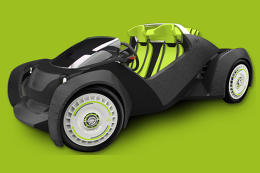
And digital manufacturing’s incidence in the U.S. small trade space can also be rising. This yr, Phoenix-primarily based local Motors 3-D printed a complete car chassis in simply 44 hours, for its electrical car, the Strati. native Motors hopes to clear U.S. auto regulations in 2016 to produce the car for customers at its expanding net of “microfactories,” hyperlocal areas that integrate all the components of design, manufacturing, and retail. Etsy, meanwhile, launched its Etsy Manufacturing industry in September to compare Etsy dealers to small manufacturers.
And Brooklyn’s Maker’s Row specializes in digital manufacturing to facilitate startups’ transition to the manufacturing section. “that you could advance your product on-line, that you may pull a provide chain together online, and which you could correspond with everyone,” says Matthew Burnett, Maker’s Row’s CEO and cofounder.
For now, Dok’s Strauser still goes to China 5 – 6 times per year. nowadays, on the other hand, he has had hassle discovering reliable factories to work with, witnessing firsthand how they’re struggling to stay open, amid drive to extend home wages and accommodate labor regulation changes. over the years, he has moved from manufacturing facility to factory, juggling three to four contractors at a time. If he had the money, he says, he would manufacture as so much as he might in the us. and three-D printing wouldn’t be a part of the method.
(64)


